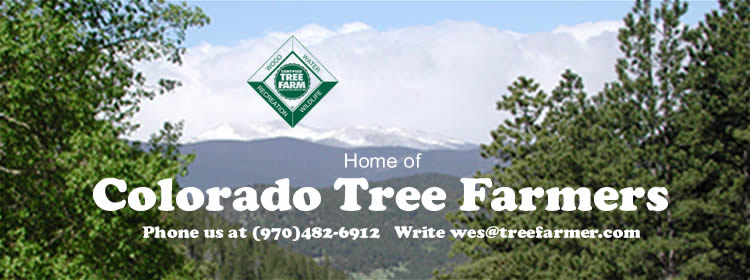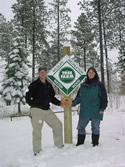Feel free to forward this alert to a friend.
New readers, if you would like to receive an email alert like this whenever new information about the pine beetle epidemic or any other content is added to our website, write stumpmaker@gmail.com and ask to be added to the Tree farmer Alert email list. It's free! |
A Question from a Reader:
Tue, Feb 3, 2009 at 9:48 AM:
I cut down a Ponderosa Pine tree as a general thinning operation last August. This last weekend I cut the log into managable sections and noticed what I believe are signs of pine beetle infestation. The trunk had lots of pitch tubes and blue stained sapwood. What measure should I take with this downed tree.
For the record, I live n the Davis Ranch area.
Hi Neighbor,
We're working hard on setting up some Tree Farmer sponsored tours in the area that will bring landowners and experts on identifying and and treating beetle infestation together to share ideas.
In the meantime:
If your Ponderosa was cut in August, it might very well be infested with pine beetle from the latest flight. We're getting reports from all over the area now of newly infested trees. Your message indicates you already know that just cutting the tree will not kill the beetles. You might start by removing the bark around some of the pitch tubes and looking for evidence that the beetles have successfully overcome the trees defenses, laid their eggs, and that larvae are now feasting on the tree. Note: this might take some practice. The bark may not be easy to peel off the truck.
Given your description and since your tree has already been cut, you may want to just assume that it has been infested and treat it to kill the larvae before they become adult beetles and fly on to infest more trees in late summer.
Exposing the larvae to the air before they pupate will kill them.
- So, you can remove all the bark on the logs. Time consuming but it works if you want to use the remaining wood for other purposes. You can purchase specialized tools to "debark" logs. See http://www.treefarmer.com/equipmen.htm for some suppliers.
- You can also chip the logs into small enough pieces so the larvae are exposed or killed. Chippers are expensive so you may want to hire a contractor for this job. In the Fort Collins District of the Colorado State Forest Service where your property is, see http://www.treefarmer.com/loggers.htm for a list of contractors.
Exposing the larvae to excessive heat will also kill them.
We realize that these suggestions may have brought more questions to mind. Don't hesitate to write again or, better yet, attend some of our tours and/ or Tree Farm meetings for more details or additional ideas.
|
| |
|
|




